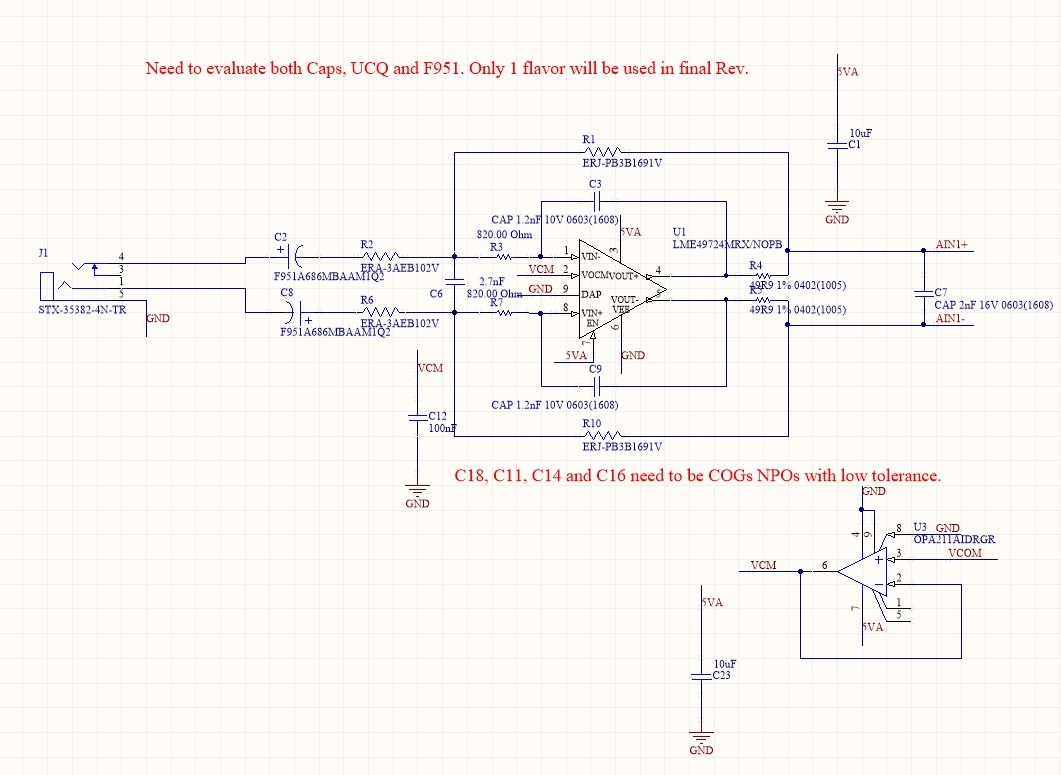Other Parts Discussed in Thread: LME49724, , OPA1632, THS4551, OPA1692, THS4131
Hello,
I am using OPA211 in unity gain as a Vcom pin driver to LME49724. The output of the LME49724 is driving my ADC in a MFB configuration.
I would like to know how large of a cap i can put on the output of OPA211 to filter out any excess noise and still have OPA211 be stable.
Since this is a DC application for the OPA211, does it matter if I exceed 1 nF at the output... I saw on the datasheet that you would get 40% overshoot with 200 pF at unity gain.
Thank you so much.


